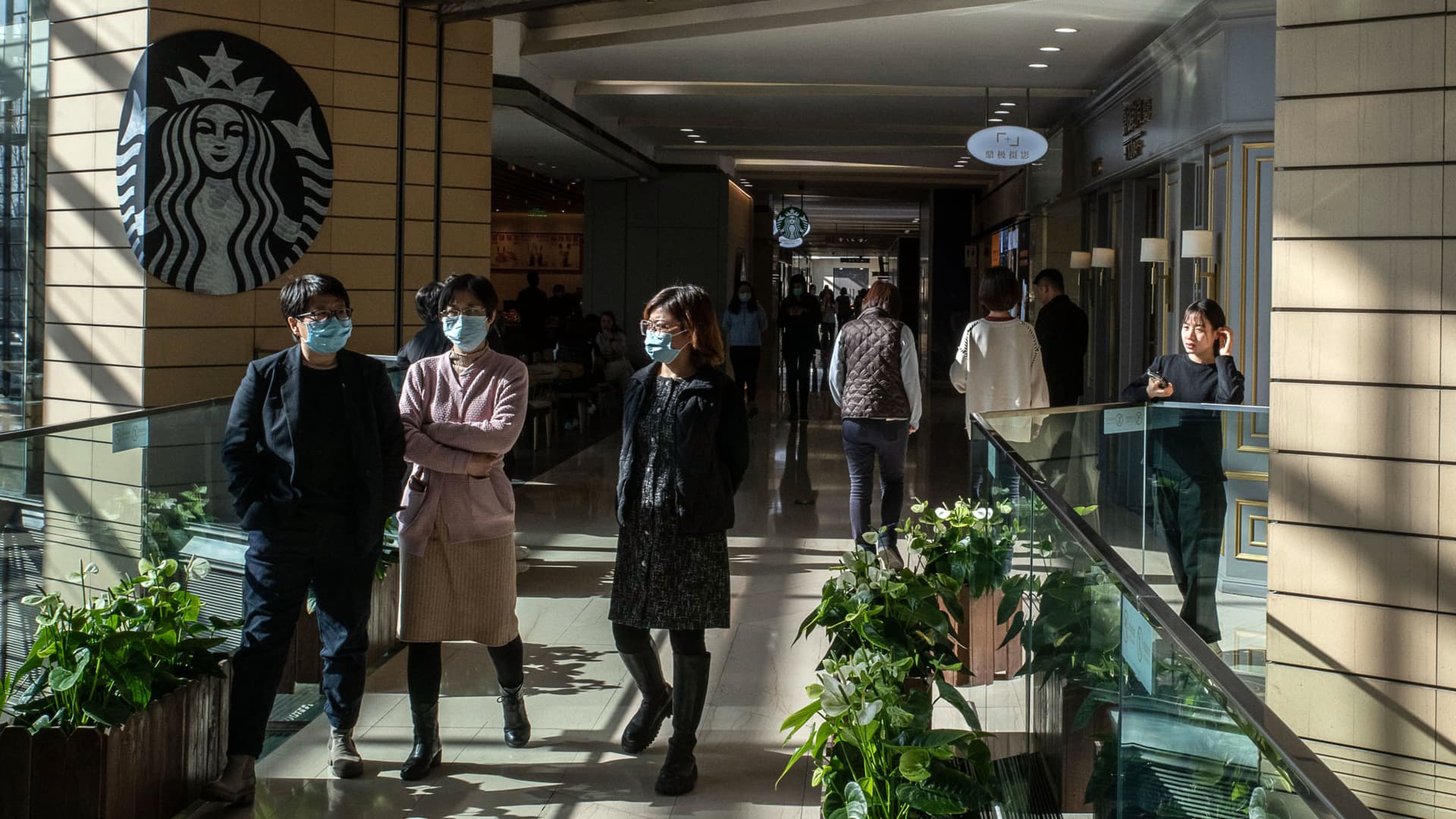BEIJING — Chinese consumer spending won’t return to pre-Covid levels anytime soon, a problem for international brands such as Starbucks, Morgan Stanley said in a report Sunday.
Not only are people more cautious, but they now have more choices.
On the spending side, three factors are weighing on China’s consumer this year, the Morgan Stanley analysts said.
First, China has not handed out stimulus checks to consumers as the U.S. and other parts of the world did in the wake of Covid.
Second, pandemic restrictions and regulatory changes have eliminated 30 million service sector jobs that would have existed prior to Covid, the analysts estimated.
About 20 million of those jobs are likely to return later this year and next, the report said. But the analysts expect the remaining 10 million will take longer to restore since they were affected by Beijing’s crackdown on education, internet technology and property.
Third, the housing market has remained persistently soft in the wake of government efforts to limit speculation.
Previously, as recently as during the first half of 2021, property sales had led the recovery, the Morgan Stanley analysts pointed out.
Covid-19 and measures to control it from 2020 to 2022 dragged down China’s economy. Since the abrupt end of those restrictions in December, growth has only recovered modestly.
After an expected 9% rebound in Chinese consumers’ spending this year, Morgan Stanley analysts forecast an increase of 4.8% next year — 0.5 percentage points lower than before the pandemic.
For Starbucks, the analysts expect the industry metric of same-store sales in China to grow by about 7% this year. That’s still “down roughly low-teens” versus 2019 levels, the report said.
Local market gets tougher
Also making things harder for international brands is growing local competition.
In fact, the U.S.-based coffee giant is “least favored to lever China’s recovery,” among to the Morgan Stanley analysts’ U.S. “restaurants” stock picks.
In April, China saw a 16% year-on-year increase in the number of coffee stores — mostly local brands, the Morgan Stanley report said. “As a result, MNCs like SBUX have been losing market share (though still growing stores at a robust pace).”
“The brand has more competition from relatively nascent but rapidly growing concepts like Luckin, Cotti, and Tim Hortons.”

China-based Luckin Coffee now has more than 9,000 stores, while Tim Hortons has more than 600 locations after entering the country in 2019, according to the companies. New brand Cotti Coffee is so popular its website warns of people trying to impersonate the brand.
Starbucks opened its 6,000th store in mainland China in September 2022.
